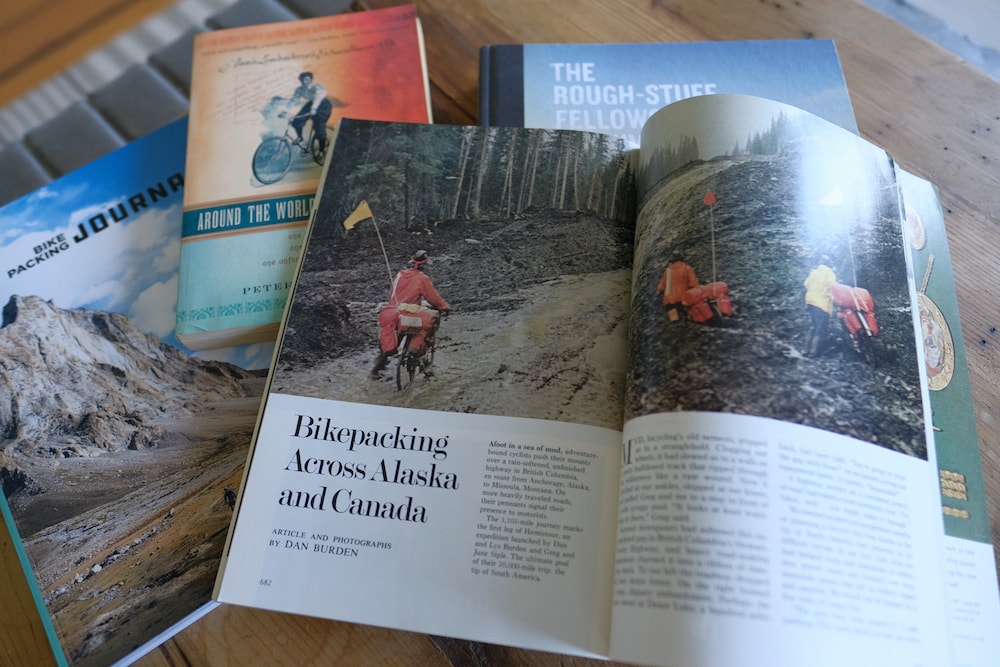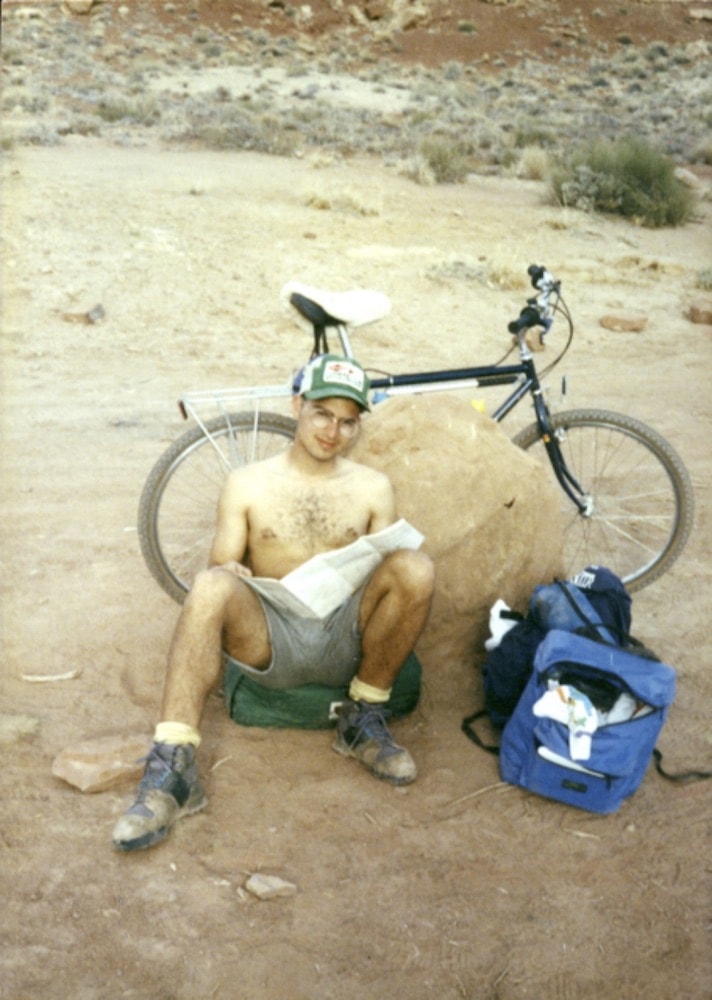I took my first bikepacking trip in the late 1980s. We didn’t know that what we were doing was called that since the label would take some time to catch on, but the portmanteau shows up as early as 1973 in National Geographic. I had heard from bike shop friends that intrepid wanderers were bicycle touring in the woods and in the backcountry on mountain bikes and it made sense to my nineteen year old’s mind. The idea mashed together hiking and trail riding and a classic road trip. It possessed a distinctive sensibility, carrying with you all of your gear, riding not for speed but for enjoyment, camping under the stars, and, most of all, moving at a human pace through the landscape slowly enough to uncover resonances with the geography and people met along the way. Bikepacking seemed like stories wanting to be told.

That first trip was during spring break where a friend and I boarded an Amtrak train in Albany to watch the USA from railcar windows for 40 hours before arriving in Thompson, Utah in the middle of the night. We assembled our bicycles and packed our panniers with gear from our college outing club. The list included a camp stove, a flannel shirt, and an Edward Abbey book. The next morning we rode to Canyonlands National Park to circumnavigate the famous White Rim Trail, and we were hooked.

After that, in my mind bikepacking could be a European summer journey with no rail pass, or a way to respectfully and effortfully visit monasteries in northern India, or it could be hollering at the full moon on an expansive salt flat. That was my fantastical imaging of it and I ended up doing those very things, yet that is not the entirety of bikepacking. The thing is, if you always picture a bicycle trip as a soaring tale, you might never go on one out of fear that it won’t live up to that expectation. Bikepacking is just as much about camping with friends on the 4th of July after getting to the state park under human power, or about setting off from Grand Central Station to link up the terminuses of two different Metro–North lines, with a sleep in between. It is just as much picnicking at a nearby lake before setting up a hammock to wake up the next morning and be back before work.
Bikepacking, then, is riding a bicycle with an aesthetic and regard for the outside, for movement, for breathing in new places.
It’s pedaling alone or with friends for an overnighter or for months away from home. It’s often riding on dirt paths and trails to get away from traffic and into nature, but there are no rules, so riding on asphalt to the city’s edge to pitch a tent and eat a burrito that you bought on the way out of town certainly counts.

Pedaling to go camping has been around since the invention of the bicycle, as has been the impulse to ride a bicycle with an imagination for horizons near and far. For endlessly utilitarian technology, bicycles have always been unusually amenable to metaphorical extension, a vehicle that goes far beyond literal distance to meet freedom and liberation. Bicycles were and are that for me, but it wasn’t an obvious path from Brooklyn to bikepacking.
Why Bikepacking? As a child in summertime I occupied the front passenger seat of my father’s taxicab as he picked up passengers in Manhattan. I was small and curious and I stood up and turned around to talk to customers through the plexiglass. No, those moments had nothing directly to do with cycling, but they may have said something to me about learning from places and people and promise. By the end of his life, my father had seen exactly two neighborhoods, his native Puerto Rico and New York City. In some technical sense he hadn’t seen much of the world at all, but his open and curious and happy eyes were an assurance that someday I could and would.
My adventure friends sometimes express skepticism about living in New York City, but, really, it would be more complicated to live anywhere else. For global expeditions where the first leg of travel is getting on a flight, NYC is an enviable place to be. The most common scenario for me is where I sling a duffel bag of gear on to my back and carry my boxed bicycle to the bottom of my street to descend the stairs to the E train. With the box on its side and commuters asking where I’m headed, I travel to from Manhattan to JFK. For under eight bucks I’ve taken public transportation to board a plane to see a little more of the world.

Global adventure is not exploration—we’re not explorers or discoverers or somehow uncoverers of exotic life that needs to be reported on and only achieves existence when we go there.
It’s instead a chance to learn and listen, to be vulnerable and to not indulge oneself in the assumption that the way of living that we know is the only way or the right way. New York City already teaches that lesson if one is open to it, so there’s a continuity and confidence in getting on that plane.
A ride in Egypt put me in touch with the revolutionary vision of the march to Tahrir Square, I’ve ridden my bicycle on mining roads in Bolivia, and I’ve given free reign to my interest in the history of World War I by riding along the Isonzo Front in Slovenia. A few years ago some friends and I did a big ride in the rolling valleys and mountain passes in Kyrgyzstan, and that route has since been followed by hundreds of cyclists who sometimes write to me to say how much they enjoyed it. I’ve also ridden a circuit of lovely inns in Vermont, and my wife and I always bring our folding bikes when we travel so that we can pedal from town to town with plenty of wine or swim breaks along the way. The scale isn’t the point. Instead, it is the cyclical pedaling and the recognition by others that you’re on a quiet, inquisitive, humble journey that gives it life.
I hope to keep riding in this style. It lets me think but, better, it lets me do and be in the world with an engagement with other people and the topography of culture and landscape. There’s often seductive, fancy gear and expensive gadgets in bikepacking photos, but little of that matters. Any bicycle will do and will be ready for a trip once it has a rack with a waterproof dry bag strapped on, maybe a frame bag, and probably a tent roll cinched to the handlebars. The concrete stuff of the trip fades into the emotions and day’s textures, the conversations, and the night sky. Air up your tires and go.
You can find Joe’s writing and photos on his blog at joecruz.wordpress.com and he is on Instagram @joecruzpedaling. For comprehensive bikepacking advice ranging from gear to routes to storytelling, head over to bikepacking.com. Joe is a proud ambassador for sevencycles.com, revelatedesigns.com, and searchandstate.com.
